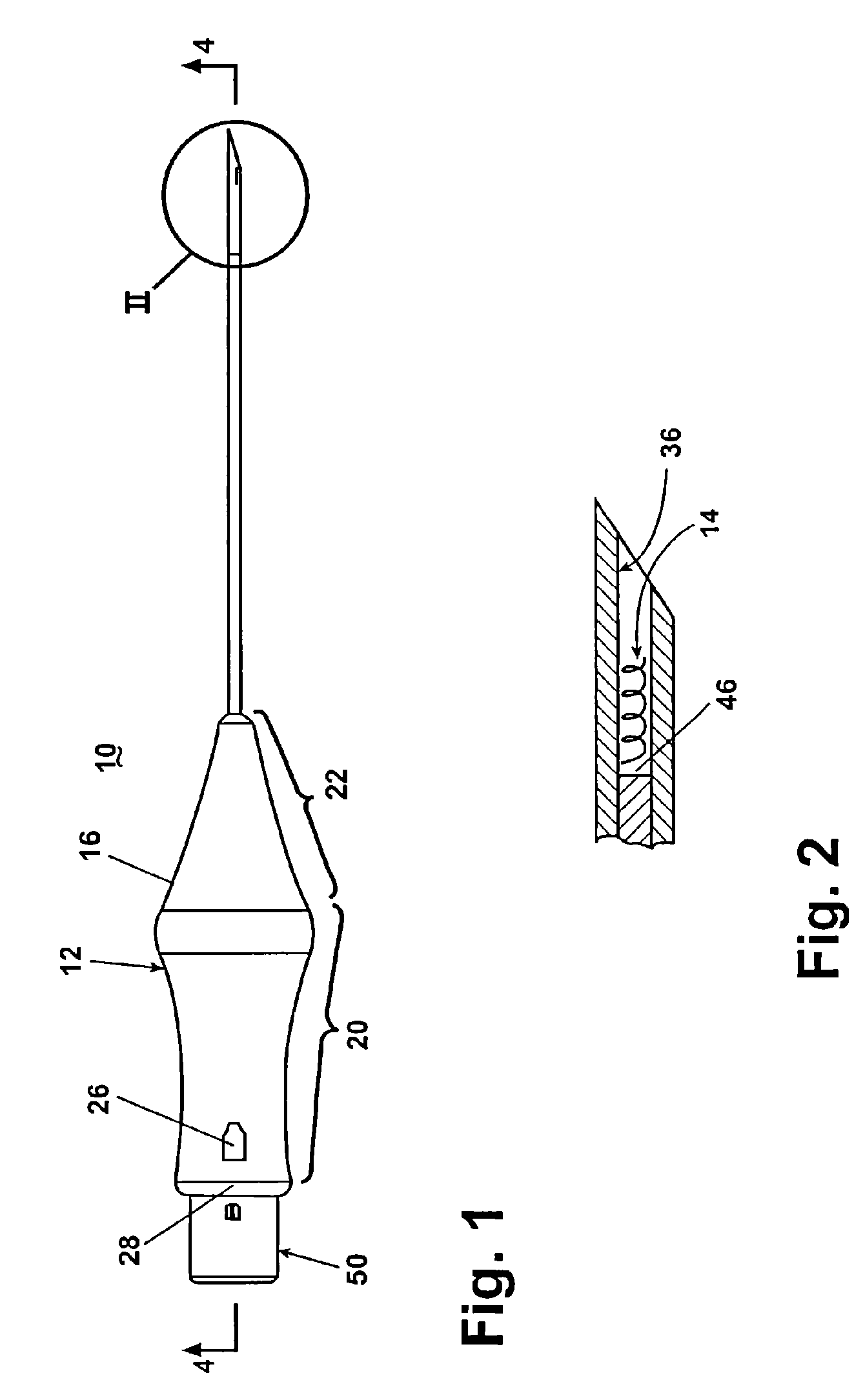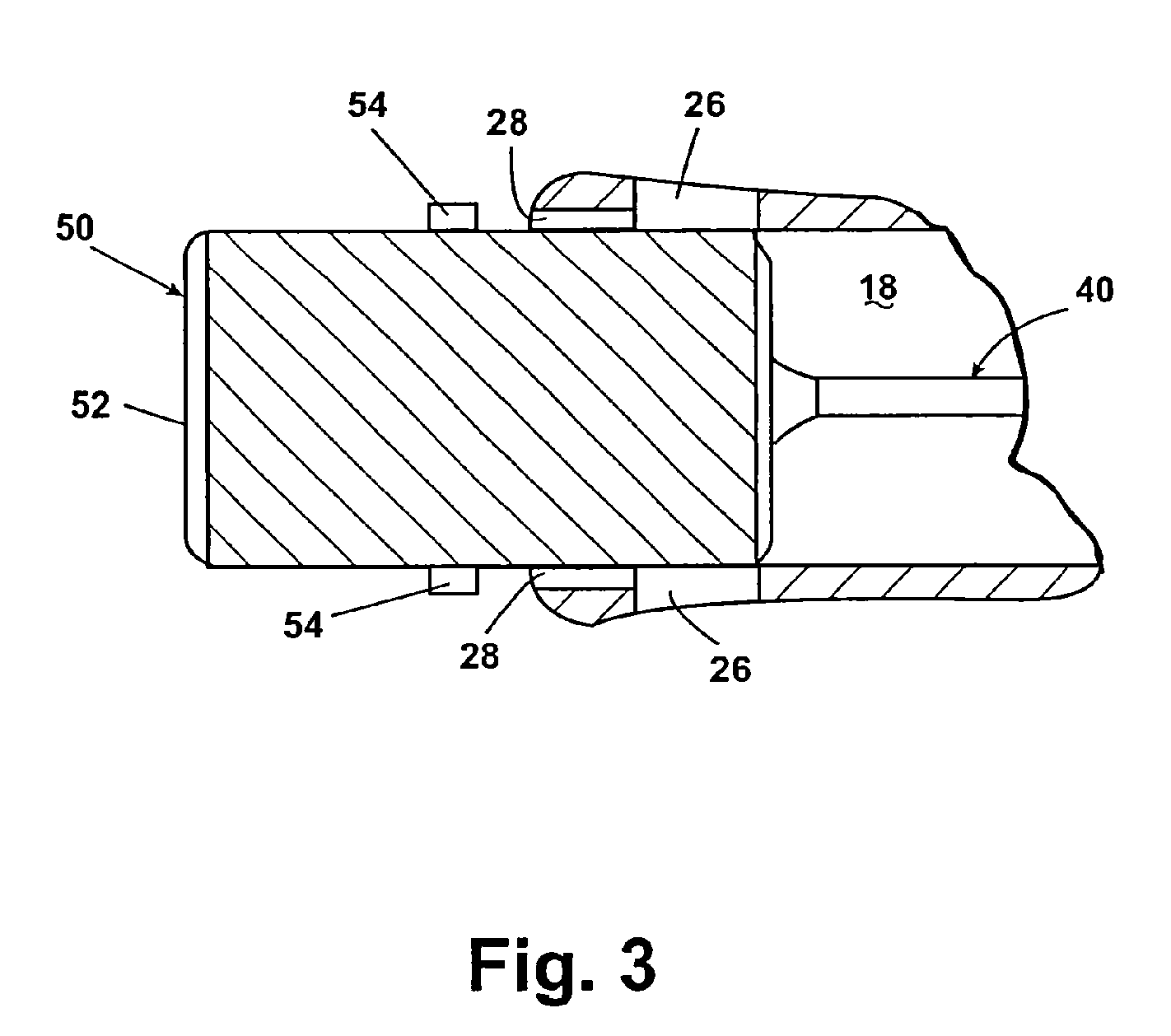Apparatus for the percutaneous marking of a lesion
a technology of percutaneous positioning and radiopaque markers, applied in the field of intravenous markers, can solve the problems of reducing the size of the biopsy, inaccurate identification of the biopsy location, and error in determining the biopsy location, so as to facilitate subsequent determination and effectively fill the marker recess
- Summary
- Abstract
- Description
- Claims
- Application Information
AI Technical Summary
Benefits of technology
Problems solved by technology
Method used
Image
Examples
Embodiment Construction
[0031] FIGS. 1 to 4 illustrate a biopsy marking apparatus 10 according to the invention, which is capable of the percutaneous placement of a radiopaque marker at the location of a tissue biopsy. The biopsy marking apparatus 10 comprises an introducer 12 and a radiopaque marker 14 (FIG. 2) contained within the introducer 12. The introducer 12 includes a handle 16 having a hollow interior 18. The handle 16 comprises a grip portion 20 from which extends a tapered nose portion 22. The grip portion 20 defines a rear opening 24 that provides access to the hollow interior 18. A pair of detents 26 are formed in the grip portion 20 near the rear opening 24. Channels 28 are formed on the interior surface of the grip portion 20 and extend from the rear opening 24 to the detents 26.
[0032] The nose portion 22 comprises a guide passage 30 extending from the tip of the nose portion 22 to the hollow interior 18 of the handle 16. The guide passage 30 decreases in diameter inwardly from the tip of t...
PUM
 Login to View More
Login to View More Abstract
Description
Claims
Application Information
 Login to View More
Login to View More - R&D
- Intellectual Property
- Life Sciences
- Materials
- Tech Scout
- Unparalleled Data Quality
- Higher Quality Content
- 60% Fewer Hallucinations
Browse by: Latest US Patents, China's latest patents, Technical Efficacy Thesaurus, Application Domain, Technology Topic, Popular Technical Reports.
© 2025 PatSnap. All rights reserved.Legal|Privacy policy|Modern Slavery Act Transparency Statement|Sitemap|About US| Contact US: help@patsnap.com



